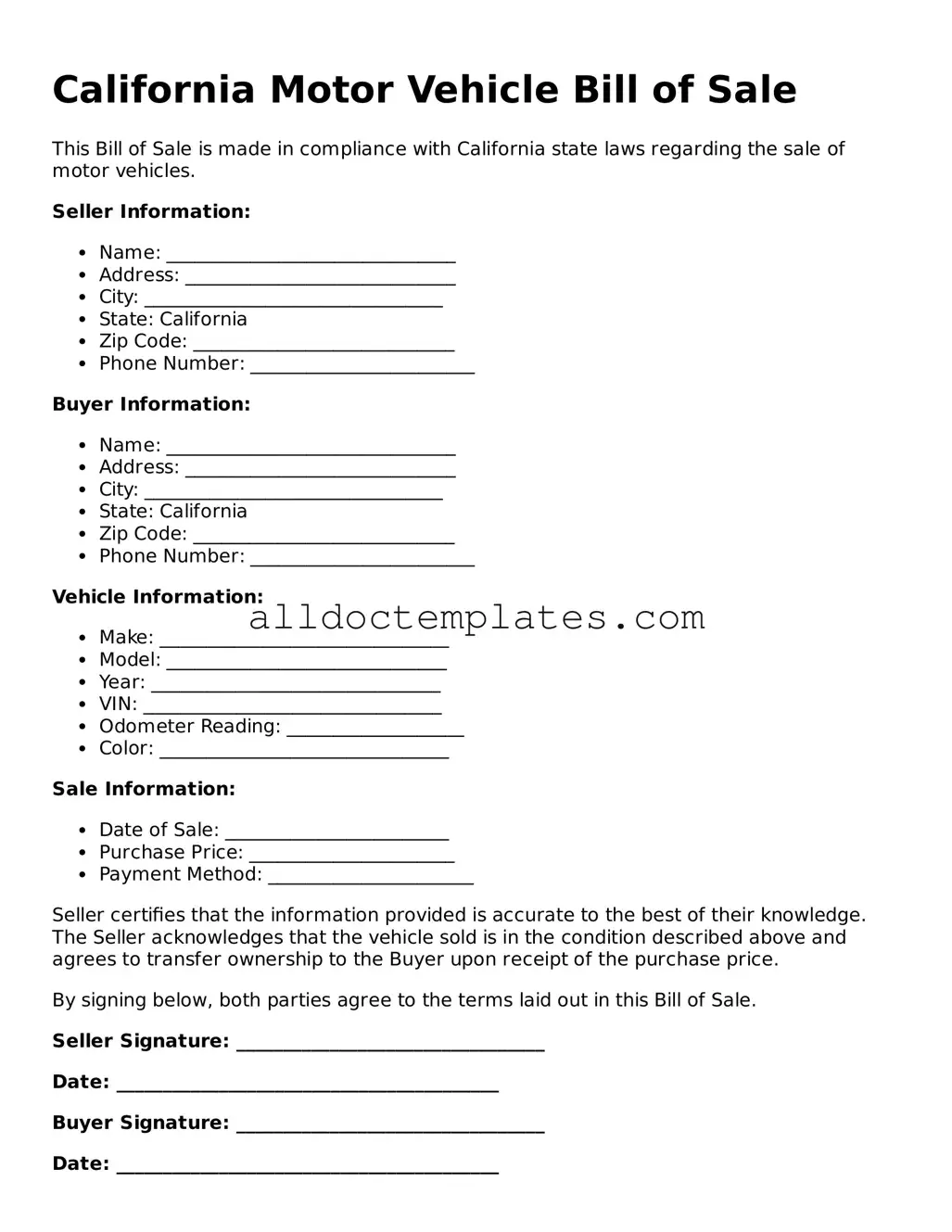California Motor Vehicle Bill of Sale
This Bill of Sale is made in compliance with California state laws regarding the sale of motor vehicles.
Seller Information:
- Name: _______________________________
- Address: _____________________________
- City: ________________________________
- State: California
- Zip Code: ____________________________
- Phone Number: ________________________
Buyer Information:
- Name: _______________________________
- Address: _____________________________
- City: ________________________________
- State: California
- Zip Code: ____________________________
- Phone Number: ________________________
Vehicle Information:
- Make: _______________________________
- Model: ______________________________
- Year: _______________________________
- VIN: ________________________________
- Odometer Reading: ___________________
- Color: _______________________________
Sale Information:
- Date of Sale: ________________________
- Purchase Price: ______________________
- Payment Method: ______________________
Seller certifies that the information provided is accurate to the best of their knowledge. The Seller acknowledges that the vehicle sold is in the condition described above and agrees to transfer ownership to the Buyer upon receipt of the purchase price.
By signing below, both parties agree to the terms laid out in this Bill of Sale.
Seller Signature: _________________________________
Date: _________________________________________
Buyer Signature: _________________________________
Date: _________________________________________
